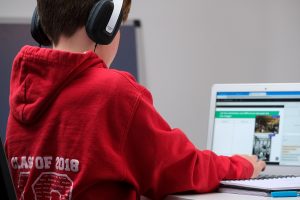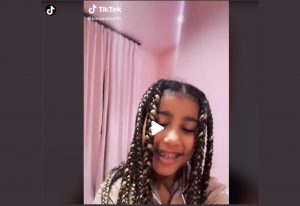In the hustle and bustle of everyday life, parents need to focus on their home office or housework when the screens are on to distract kids and babies, but there can be risks if the app of choice is YouTube Kids.
A new survey by the Tech Transparency Project (TTP), an initiative of the American NGO Campaign for Accountability, revealed that the app’s content is not as harmless as it seems.
TTP created three accounts to simulate the experience of the young YouTube Kids audience and found offensive content unsuitable for the platform’s target audience, the 0-12 age group. Videos displaying drugs, weapons, and diet culture for children are some of the inappropriate content identified by the organization.
Research identifies risks in YouTube Kids videos
YouTube is owned by Google, which has faced several lawsuits in recent years for allowing viewing of content not suitable for children. With YouTube Kids, the complaints are the same: Violent and obscene videos were often allowed on the children’s platform.
In addition, YouTube Kids has come under scrutiny by US legislators for a large number of advertisements and commercial content disguised as entertainment for children.
The platform isn’t the only one on regulators’ radar because of its impact on children. Instagram announced in September delaying the launch of a child app After it was revealed that Facebook had known for years that the social network was toxic to young girls.
This Facebook itself and its rival TikTok are also targeted by US prosecutors to investigate the harm these practices can cause to young people.
For TTP researchers, YouTube Kids’ persistent problems and risks are all about an extremely vulnerable audience, as the platform boasted over 35 million weekly users worldwide last year.
“YouTube Kids says it provides kid-friendly content. However, the platform continues to allow harmful videos to reach its vulnerable youth audience.
The children’s platform says it has “invested heavily over the years” to make the YouTube Kids app “a safer and more familiar place for kids to explore their imaginations and curiosity.”
read it too
Under pressure, Facebook delays launch of end-to-end encryption on Messenger and Instagram
However, TTP found that inappropriate content continued to pass through the site’s human algorithms and moderators:
“TTP found videos on YouTube Kids that talk positively about cocaine and methamphetamine, give instructions on how to hide the gun, promote skin whitening, and introduce kids to diet culture.
Other videos identified by TTP appear to violate YouTube Kids’ policy for “extremely commercial or promotional” content.”
For the survey, the entity created three YouTube Kids accounts, one for each age setting on the site: preschoolers ages four and under; children aged five to eight and the oldest group aged nine to 12.
For research purposes, the organization has not enabled parental control features such as turning off autoplay and limiting channels that children can access. Using these test profiles, TTP searched for terms related to objectionable content and quickly got inappropriate results.
YouTube Child Risks: Showing kids videos about drugs and guns
TTP points out that YouTube Kids calls itself a “filtered version of YouTube” created to provide kids with “an immersive and age-appropriate experience.”
“We work to identify age-appropriate content that fits our quality principles and is diverse enough to meet the diverse interests of children around the world,” the platform says.
However, that’s not what the searcher found in their search on the site. A video has reached five-year-olds teaching how to play Eric Clapton’s song “Cocaine” on bass.
“The song featured lyrics like ‘When you get bad news, you want to kick the blues, cocaine’ and ‘When you feel gone and want to move on with your life, cocaine’.
According to the researchers, YouTube Kids for kids ages five to eight says the videos may have “an out-of-focus display of alcohol or tobacco,” but says nothing about allowing talk of heavy drugs.

In another example, a video for kids ages five and up showed how to create a Minecraft game version of the trailer that appeared in the series “Breaking Bad.”
In fiction, the vehicle is used as a meth lab by main character Walter White, a high school teacher and drug dealer.
“In the video, the Minecraft player suggested putting items that look ‘meet’ inside the vehicle.
MagmaMusen, the creator of the “Minecraft RV” video, offers the same content on its main YouTube site with a description:
“A tutorial for the iconic van from the Breaking Bad series where methamphetamine was produced! Tasty..:).”
The TTP investigation also identified a number of videos about weapons on YouTube Kids.
A video presented to children ages five to 12 evaluated recoil pads, which protect shooters from the recoil of a firearm.
Another video from the same channel, Ezvid Wiki, evaluated ammunition storage containers and described products that “can store bullets of any size”. Search warns:
“This content can serve to normalize gun culture for children, and it comes at a time when gun manufacturers are increasingly using social media to target children, especially boys, with their marketing messages.”
One of the analyzed contents showed how to hide a gun inside the house. The video by creator JerryRigEverything gave step-by-step instructions on how to create a shelf with a secret compartment.
“When the video described what kind of ‘goodies’ could be kept on the shelf, it was a prime weapon. The video, which was made available to children ages nine to 12, was later removed from YouTube Kids; It is unclear how long it has been on the platform.”

TTP explains that YouTube Kids’ content policies for children aged nine and over allow certain depictions of guns, such as “toy guns that are unrealistic in the context of gameplay” and “guns that look realistic in games and animated content,” but are no exceptions. Videos evaluated in the survey.
read it too
The dangers of the Internet: Oxford researcher offers seven tips for protecting children’s privacy
Children were presented with skin whitening and diet culture
Another alarm TTP has raised about the risks of YouTube Kids concerns the videos about skin whitening and diet culture that were watched unrestrictedly during the research.
In a video available to children aged nine to 12, a young woman taught how to mix home bleach and apply it to her face.
Content creator Saba İbrahim has more than two million YouTube subscribers; His Instagram account stated that he is a blogger and lifestyle influencer in Mumbai, India.
“Skin lightening products often contain toxic ingredients like mercury, and experts say they perpetuate the colorist bias around the world that places more value on light-colored skin,” the researchers explain.
The title of the video is “ALL ABOUT FACE WHITENING | HOW I LIGHTED MY FACE AT HOME”, without keeping any secrets about its content.
“YouTube Kids’ policies for older children allow for ‘beauty product reviews’ and ‘health and wellness educational content,’ but do not directly address skin lightening practice, which has significant race and health implications.”

Some questionable content on YouTube is packaged in “cute cartoons”.
For example, a video discovered by TTP showed an animation of a potato, some in gym clothes, singing about “the importance of burning calories.”
The organization explains why this type of content is considered harmful to children:
“Available for all ages, the video introduced young children to the idea of losing weight.
There is growing concern that the diet culture that idolizes thinness is taking root in children – part of a growing awareness of how social media promotes eating disorders in teens.”

read it too
The TikTok account of her 8-year-old daughter turned into a ‘duel’ between Kim Kardashian and Kanye West on Instagram.
‘Unboxing’ remains one of YouTube Kids’ biggest risks
YouTube Kids announced last August that it will begin removing “excessive commercial or promotional content”, including videos that focus on “product packaging” or encourage children to spend money directly.
It turns out that the new policy is targeting celebrity videos. unboxing Toys exploding on YouTube in recent years. In this type of content, influencers show the step-by-step steps of unpacking a new product, all the items and accessories that come with it, as well as the quality of the packaging.
According to TTP, critics unboxing say these videos have no educational value and are usually nothing more than sponsored content.
Despite the new restrictions aimed at minimizing the risks of YouTube Kids, the organization found that the platform was full of this type of content.
“In a video called ‘Unboxing the Super Mega’, a person was seen opening several egg-shaped plastic containers filled with candy, stickers and toys and spraying the contents.
Others included detailed unboxes of playsets for Polly Pocket and Peppa Pig.
Each of these videos had the word “unboxing” in the title, which didn’t hide the theme. All came from YouTube creators with a huge following. CookieSwirlC, creator of the plastic egg video, has 17.7 million YouTube followers.”
TTP’s research shows that despite promises to provide a safe environment for children, YouTube Kids continues to “expose children to potentially harmful or excessively commercial messages” by allowing inappropriate content to pass through its human and algorithmic filters.
“Given the platform’s audience of millions of children, YouTube’s children’s website has a special responsibility to do things right and protect its vulnerable users.”
read it too
source: Noticias


